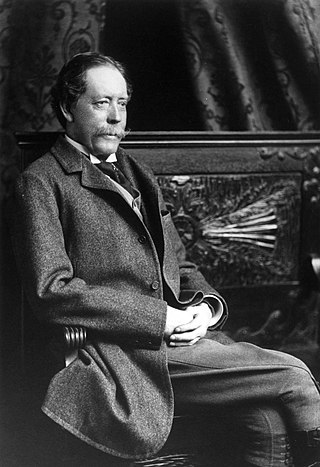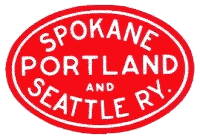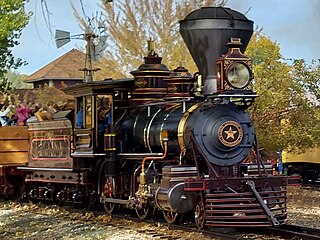Related Research Articles

Carson County is a county located in the U.S. state of Texas. As of the 2020 census, its population was 5,807. The county seat is Panhandle. The county was founded in 1876 and later organized in 1888. It is named for Samuel Price Carson, the first secretary of state of the Republic of Texas.

Thomas Michael Holt was an American industrialist who served as the 47th governor of North Carolina from 1891 to 1893. Formerly a North Carolina State Senator and Speaker of the House of the North Carolina General Assembly, Holt was instrumental in the founding of North Carolina State University, as well as in establishing several railroads within the state and the state's department of agriculture. Holt was also responsible for the technology behind the family's Holt Mills "Alamance Plaids", the first colored cotton goods produced in the South – a development that revolutionized the Southern textile industry.

William Jackson Palmer was an American civil engineer and veteran of the American Civil War. During the Civil War, he was promoted to brevet brigadier general and received a Medal of Honor for his actions.
The Erie Railroad was a railroad that operated in the Northeastern United States, originally connecting Pavonia Terminal in Jersey City, New Jersey, with Lake Erie at Dunkirk, New York. The railroad expanded west to Chicago following its 1865 merger with the former Atlantic and Great Western Railroad, also known as the New York, Pennsylvania and Ohio Railroad. Its mainline route proved influential in the development and economic growth of the Southern Tier of New York state, including the cities of Binghamton, Elmira, and Hornell. The Erie Railroad repair shops were located in Hornell and was Hornell's largest employer. Hornell was also where Erie's mainline split into two routes with one proceeding northwest to Buffalo and the other west to Chicago.

The Richmond and Danville Railroad (R&D) Company was a railroad that operated independently from 1847 until 1894, first in the U.S. state of Virginia, and later on 3,300 miles (5,300 km) of track in nine states.

The Virginia and Truckee Railroad is a privately owned heritage railroad, headquartered in Virginia City, Nevada. Its private and publicly owned route is 14 miles (23 km) long. When first constructed in the 19th century, it was a commercial freight railroad which was originally built to serve the Comstock Lode mining communities of northwestern Nevada.

The Spokane, Portland & Seattle Railway was a railroad in the northwest United States. Incorporated in 1905, it was a joint venture by the Great Northern Railway and the Northern Pacific Railway to build a railroad along the north bank of the Columbia River. The railroad later built or acquired other routes in Oregon. The SP&S was merged into the Burlington Northern in March, 1970. Remnants of the line are currently operated by BNSF Railway and the Portland and Western Railroad.
Algernon Sidney Buford was a Virginian businessman, politician, and lawyer best known for his 22-year presidency of the Richmond and Danville Railroad, during which he was responsible for growing the line from 140 miles in length to 3,000 miles in length. Born in North Carolina to parents of Virginia stock, Buford grew up in Pittsylvania County, Virginia and attended the University of Virginia from 1846 to 1848, graduating with a Bachelor of Law. For the next decade, he practiced law in Pittsylvania and Danville and became the owner and editor of the Danville Register. These occupations were interrupted by a year's service in the Virginia House of Delegates in 1853.

The Norfolk Southern Railway was the final name of a railroad that ran from Norfolk, Virginia, southwest and west to Charlotte, North Carolina. It was acquired by the Southern Railway in 1974, which merged with the Norfolk and Western Railway in 1982 to form the current Norfolk Southern Railway.

Mound House is a small unincorporated community in Lyon County, Nevada on U.S. Route 50 that is situated between Nevada's capital, Carson City, and Dayton. Its elevation is 4,974 feet (1,516 m). It is in Lyon County, one of eight Nevada counties that allow for legalized prostitution, and is home to four brothels.
The Piedmont & Northern Railway was a heavy electric interurban company operating over two disconnected divisions in North and South Carolina. Tracks spanned 128 miles (206 km) total between the two segments, with the northern division running 24 miles (39 km) from Charlotte, to Gastonia, North Carolina, including a three-mile (5 km) spur to Belmont. The southern division main line ran 89 miles (143 km) from Greenwood to Spartanburg, South Carolina, with a 12 mi (19 km) spur to Anderson. Initially the railroad was electrified at 1500 volts DC, however, much of the electrification was abandoned when dieselisation was completed in 1954.

The Oregon Eastern Railway was a predecessor of the Southern Pacific Company that acquired or built most of the Natron Cutoff in northern California and southern Oregon, United States. It also made surveys and acquired right-of-way in eastern Oregon, which were subsequently sold to Union Pacific Railroad subsidiary Oregon–Washington Railroad and Navigation Company.

Glenbrook is a 2-6-0, Mogul type, narrow-gauge steam railway locomotive built by Baldwin Locomotive Works in 1875 for the Carson and Tahoe Lumber and Fluming Company's 3 ft Lake Tahoe narrow-gauge railroad.
The Eddy Lake and Northern Railroad was a railroad in South Carolina that operated in the early part of the 20th century.
The Scranton, Montrose and Binghamton Railroad Company was an interurban railway, commonly referred to as the Northern Electric railway, which ran between downtown Scranton, Pennsylvania, and its suburbs to the northwest, including Clarks Summit, Dalton, Factoryville and Montrose.

William Jesse Oliver was an American industrialist who operated one of the nation's most successful contracting firms in the early 20th century. He built several hundred miles of railroad in the Southern Appalachian region during the 1890s and early 1900s, and opened the Southern United States' largest privately-owned manufacturing plant in 1905. He submitted the initial winning bid for the construction of the Panama Canal in 1907, though the bid was eventually rejected.

Bucknum is a place and former community in Natrona County, in the U.S. state of Wyoming. It is located about 24 miles west by road from Casper.
References
Template:REminiscences of THomas Carson Anderson, 1968
- ↑ "Acts and Joint Resolutions of the General Assembly of the State of South - Regular Session of 1908". 1908. pp. 1467–1468.
- ↑ Wikipedia, WikiProject Trains, ICC valuations, Due West Railway
- ↑ Proceedings, American Philosophical Society, Volume 116, November 5, 1972
- ↑ Wr
- ↑ "Railway Gazette (Railway Age, Volume 43)". October 18, 1907. p. 471.